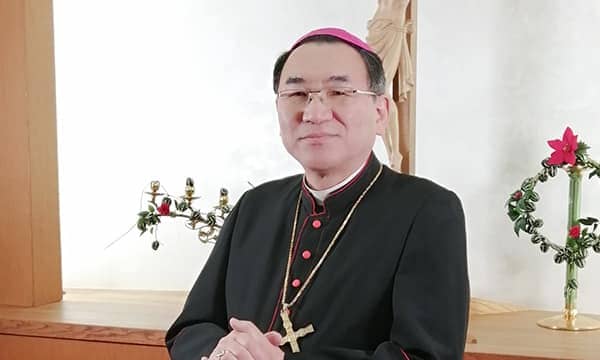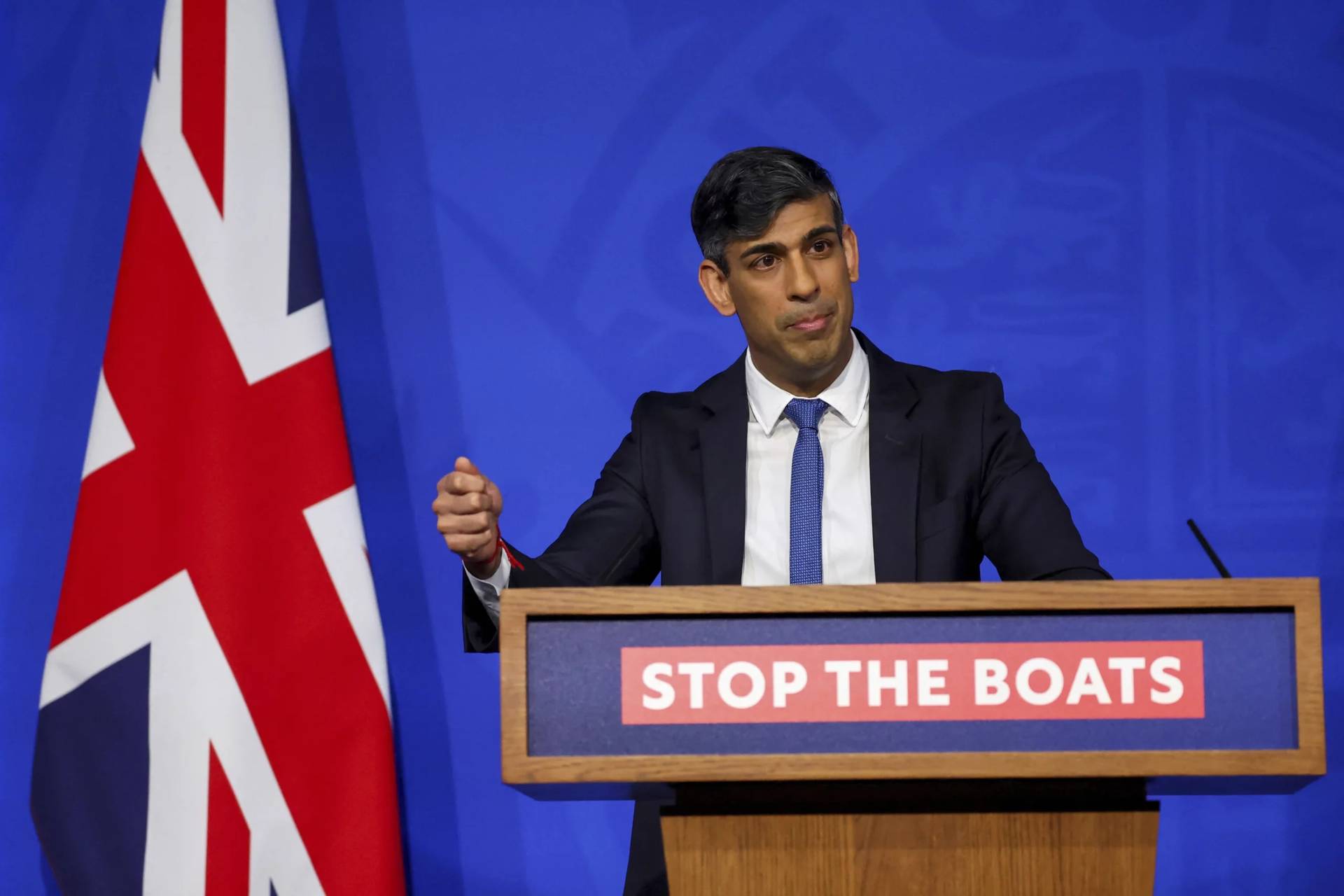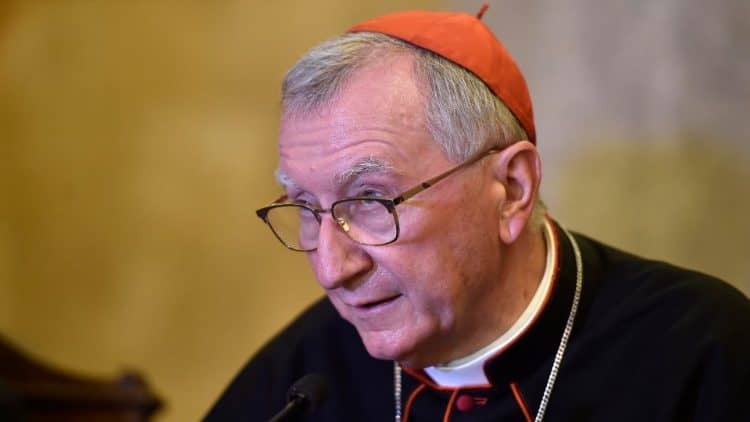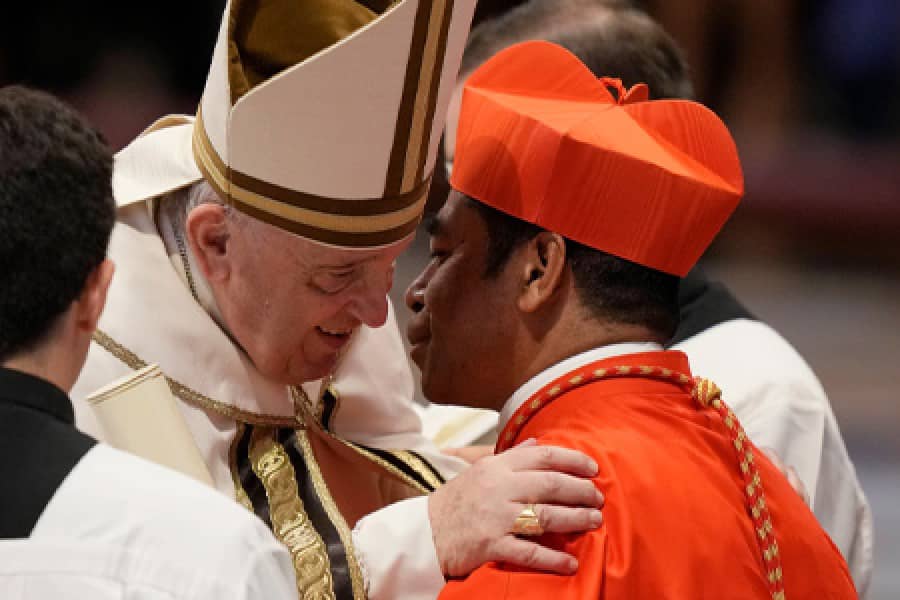ROME — With his unexpected broadside at the Vatican’s elite on Monday, Pope Francis solidified his reputation for surprise. At times it almost seems this maverick pontiff should come with a warning label, like a pack of cigarettes: “Caution … predictions are hazardous to your health!”
Trying to guess Francis might do today is challenging enough, let alone trying to anticipate what the next 12 months might bring. Nevertheless, simply looking at what’s already on the books for 2015, it’s at least possible to say that it shapes up as another eventful year.
At the moment, here’s what’s on tap for Pope Francis in 2015.
First up, Francis will hold his annual encounter with the diplomatic corps accredited to the Vatican on the morning of Jan. 12. It’s generally the pope’s top foreign policy speech of the year, and especially in light of his recent diplomatic coup in helping pave the way for a deal between the United States and Cuba, whatever indications he provides of his priorities for next year will be keenly scrutinized.
Later that day, Francis will leave for a Jan. 12-19 outing to Sri Lanka and the Philippines, marking his second voyage to Asia and the seventh foreign trip of his papacy.
As the first pope from the developing world, Francis has made a point of traveling to locations outside the West before heading anywhere in Western Europe or North America. Among other things, this outing will give Francis an opportunity to expand the Church’s dialogue with the great religions of Asia.
The stop in the Philippines also is expected to generate perhaps the largest crowd ever assembled to see a pope. When Pope St. John Paul II visited the Philippines in 1995 for World Youth Day, he drew 5 million people, and many projections suggest the number may be even larger for Francis, perhaps 6 million or more.
In mid-February 2015, Francis will hold a consistory for the creation of new cardinals. It’s a further opportunity to put his stamp on the Church’s senior leadership, perhaps including his first nomination of a cardinal from the United States. If things hold to form, Francis is likely to name 10-12 new cardinals who are under the age of 80 and thus eligible to vote for the next pope.
As he did last year, Francis has also invited all of the cardinals of the world to a meeting just before the consistory, where they will discuss both plans for Vatican reform and also the Synod of Bishops on the family later in the year. In 2014, that session provided valuable clues about where the fault lines at the synod were likely to run, and the gathering this time will therefore be closely watched.
Sometime early in the year, the pope’s “G9” council of cardinal advisors, a body that includes Cardinal Sean P. O’Malley of Boston, is expected to begin making concrete recommendations for Vatican reform, possibly involving the elimination or consolidations of some departments and the creation of one or two others.
One strong hypothesis is the creation of a new “Congregation for the Laity,” to take its place alongside existing congregations for clergy and bishops. If so, Francis has hinted that he might chose to name a lay person, even a married couple, to help lead the agency, which would represent another challenge to the Vatican’s clerical power structure.
Also sometime in the first half of 2015, Francis is expected to release an encyclical letter on the environment. If so, it will mark the first time a pontiff has devoted such a major teaching document exclusively to ecological themes.
Last November, a papal aide said the encyclical would be produced in time to influence “next year’s crucial decisions,” which include a meeting in September 2015 at the United Nations to draft the Sustainable Development Goals and another gathering on climate change in Paris in December.
Bishop Marcelo Sánchez Sorondo, chancellor of the Pontifical Academy of Sciences, recently said that Francis wants to convene a summit of faith leaders to discuss ecological issues after the encyclical comes out.
In June, Francis is scheduled to travel to Turin in Italy for a rare exhibition of its famous shroud, regarded by devotees as the burial cloth of Christ. Given that recent popes have sent mixed signals regarding their personal convictions about the shroud, observers will be watching closely to see what Francis has to say.
The day trip to Turin also marks the 200th anniversary of the birth of St. John Bosco, founder of the Salesian religious order. Since the future pope attended a Salesian school in Buenos Aires as a teenager, it should be a highly personal encounter.
The pontiff is also projected to make short outings to Naples in Italy in March — among other things to venerate relics of the 3rd-century St. Gennaro, the patron of Naples, whose blood is believed to liquefy every year on his feast day — and to Florence in November for a meeting of the Italian bishops’ conference.
In late September 2015, Francis is set to make his first trip to the United States, traveling to Philadelphia for a Vatican-sponsored World Meeting of Families. Though the Vatican has not yet released details for the trip, Francis is also expected to stop in New York to address the United Nations and in Washington, DC for a joint session of Congress.
Catholic leaders in Arizona have proposed adding a stop at the US/Mexico border to the pope’s itinerary in order to demonstrate his solidarity with immigrants, but it’s not clear at the moment if that’s in the cards.
The outing will mark not only Francis’ first trip to the United States as pope, but the first time Jorge Mario Bergoglio has ever visited the country.
Francis is already quietly making preparations, among other things working his Jesuit contacts to call on members of the order who know the United States. The closer the trip draws, the more the pope’s focus on the country and the American Church will increase.
In October 2015, Francis will once again convene a Synod of Bishops on the family, in part to ponder how hot-button issues such as how welcoming the Catholic Church ought to be to gays, how positive it ought to be about non-traditional relationships such as living together outside marriage, and whether divorced and civilly remarried Catholics should be able to receive Communion.
The October 2014 synod that discussed those issues was among the most tumultuous Vatican summits in recent memory, and there’s no reason to believe the next edition will be any less controversial.
That’s especially so given that last October’s summit was merely preparatory for the 2015 gathering, whereas this time around the bishops are expected to make some concrete recommendations for action. In the end, however, a synod is merely an advisory body, and it will be up to Francis to make the final call.
Other potential items on Francis’ to-do list for the coming year include at least three more possible trips:
- France, visiting Paris and Lourdes.
- Three Latin American nations, including Bolivia, where President Evo Morales recently announced the pontiff’s intention to visit next year.
- Africa, possibly including Uganda to mark the 50th anniversary of the canonization of the Uganda Martyrs in 1964. If so, he would become the third pope to visit the county, after Paul VI in 1969 and John Paul II in 1993.
Francis has also dedicated 2015 as a “Year of Consecrated Life,” celebrating the contributions of men’s and women’s religious orders in the Catholic Church, and will presumably have several events for religious along the way.
Of course, Francis is a spontaneous figure whose agenda evolves in response to new opportunities and changing situations. The only real way to know what 2015 will actually bring, therefore, is to stay tuned.
















